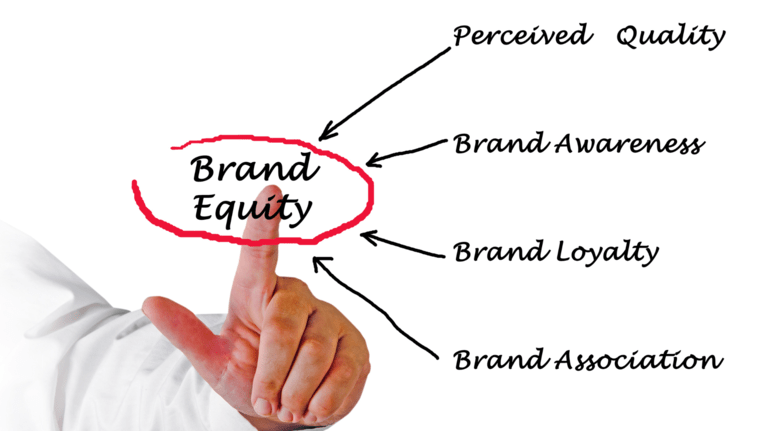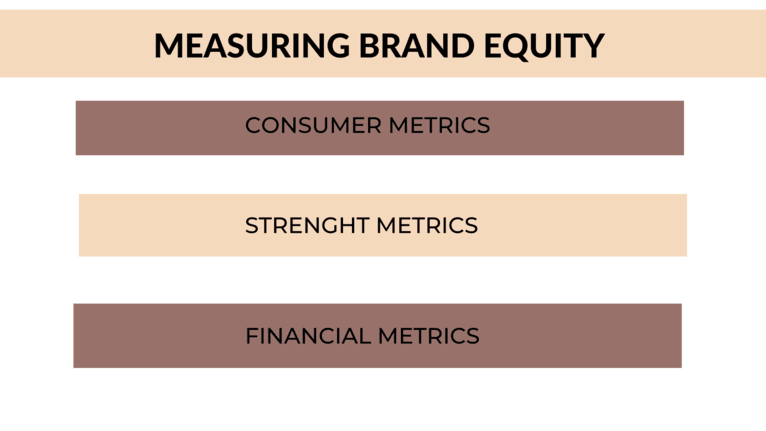Brand Equity
In short, brand equity is the value a brand holds.
Contents
What is brand equity?
Even though it plays a big part in brand valuation, strong brand equity doesn’t directly refer to the brand’s monetary value. It is an aggregator of different measures: brand awareness, brand associations, perceived value, and brand loyalty. Brand equity can increase or decrease based on these measures. Thus, we can distinguish positive brand equity and negative brand equity .
The importance of brand equity
Brand equity allows marketers to set the product or service at a higher price point gain; it brings a competitive advantage (especially in a commodity market); it increases the success of a new product or service launch; it gains attention from bloggers, press, and industry leaders. Also, it might convince investors that the business is worth investing in.
How can brand equity be increased?
In order for your clients to recognize your brand when they search for products or services, you can adopt a few habits:

- Offer excellent customer service to increase customer loyalty
- Consistency in uploading online content on social media platforms and websites
- Using the same visuals and the same logo
- Share the story behind your brand
- Monitor your brand, your competition, and the industry you work in
- Maintain brand health
1. By having high brand awareness
According to author and Harvard professor Gerald Zaltman, our purchase decisions are 95% subconscious. When a consumer is ready to purchase something, they will go with what's most familiar, the brand they know and trust the most. Maintaining and investing in your brand’s social media presence is absolutely essential in building brand awareness and influencing customer perception. Brands want to transform their clients into loyal customers. Brand awareness can be increased by using Search Engine Optimization (SEO) to get its own web page at the top of the search engine’s results. Hosting events is a good way to attract potential clients. Also, becoming a sponsor at an event that someone else is hosting but is relevant to the target market might increase brand awareness. Providing free content through blogging, e-books, or other free content will build trust and bring in thousands of readers.
2. By forming positive brand associations
The more good memories a consumer has with a brand, the better it is for brand equity. The brand manager will decide what values benefit the brand and try to suggest positive associations between those values and the brand. For example, Apple is associated with design, while Mercedes – is linked to German quality and prestige.
3. By building brand loyalty
Brand loyalty is maintained by constantly creating high-quality content and offering truly quality products or services. Also, it is kept by consistently providing an excellent customer experience and listening to the customers’ feedback. Not least, loyalty programs for the brand create incentives for people to come back. Rewards can be gift cards, freebies, or discounts.

Components of brand equity
Brand equity is created as your customers become aware of your brand’s identity. Firstly, potential customers must be aware of your existence, and after that, they can form a positive or negative opinion.
The main components of brand equity are brand perception, brand recognition, and brand awareness.
Brand perception
Brand perception is defined as what your clients think a particular service or product represents, not what the brand states about it.
While marketing managers and their teams spend a lot of time thinking about the products and services they promote and sell, consumers spend less than 10 seconds analyzing them.
It is estimated that it will take approximately seven seconds for customers to form their opinion regarding a brand. Brand credibility matter more than complex marketing activities. Besides marketing essentials (marketing strategies), brands must work on their brand perception.
Brand recognition
Recognition and visibility impact consumer perception. The more known a brand is, its perceived value will be higher. Each brand will have recognizable features that link products as belonging to a particular brand, such as a motto, a song, a specific logo, or long-term brand ambassadors.
Brand awareness Awareness of what the brand stands for can generate a certain level of transparency and familiarity, influencing clients’ perceptions of a branded product. Make constant efforts to increase brand awareness while working on establishing your brand’s health.
Measuring brand equity
Brands should track these three core brand equity metrics: consumer metrics, strength, and financial metrics.

- Consumer metrics: it isn’t a secret that customers build brands, not companies and their marketing managers. For this reason, it’s crucial to monitor consumers’ behavior, as well as their feedback. Metrics you should look out for when it comes to consumers: sentiment toward the brand, value, suggestions, and brand perception.
- Strength metrics: brands have to monitor knowledge and awareness of the brand, retention, and customer loyalty (the percentage of loyal customers). Strong brands are the ones that are resilient in the face of a crisis or significant changes.
- Financial metrics: revenue, prices, profit margins, growth rate, the cost invested in customer loyalty, and the price paid to obtain new clients. Keep in mind to proceed to a brand audit periodically.